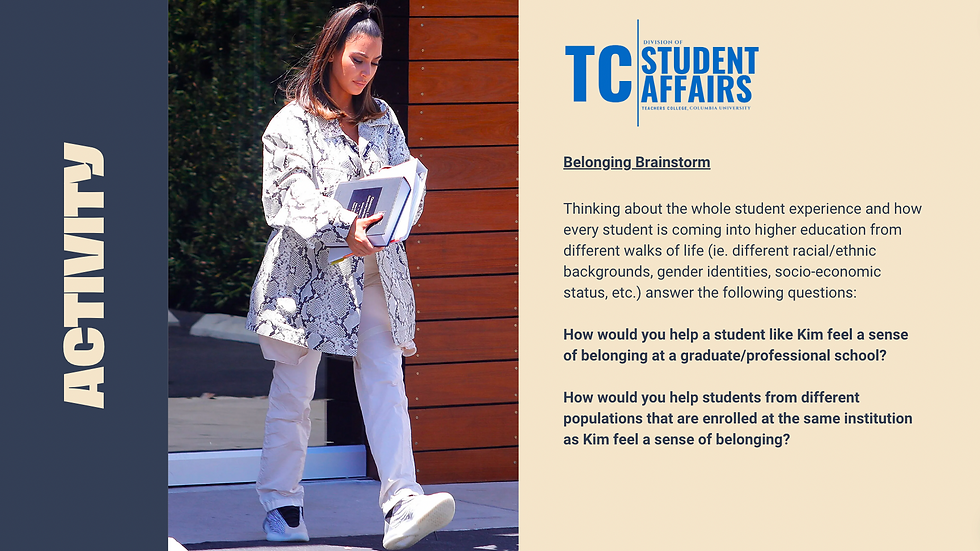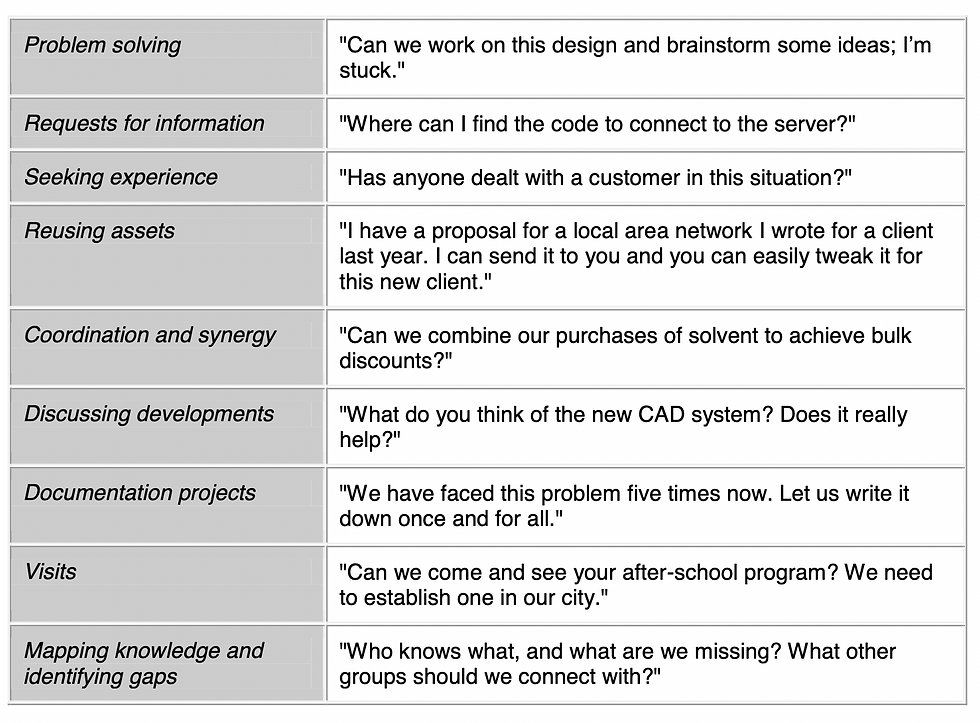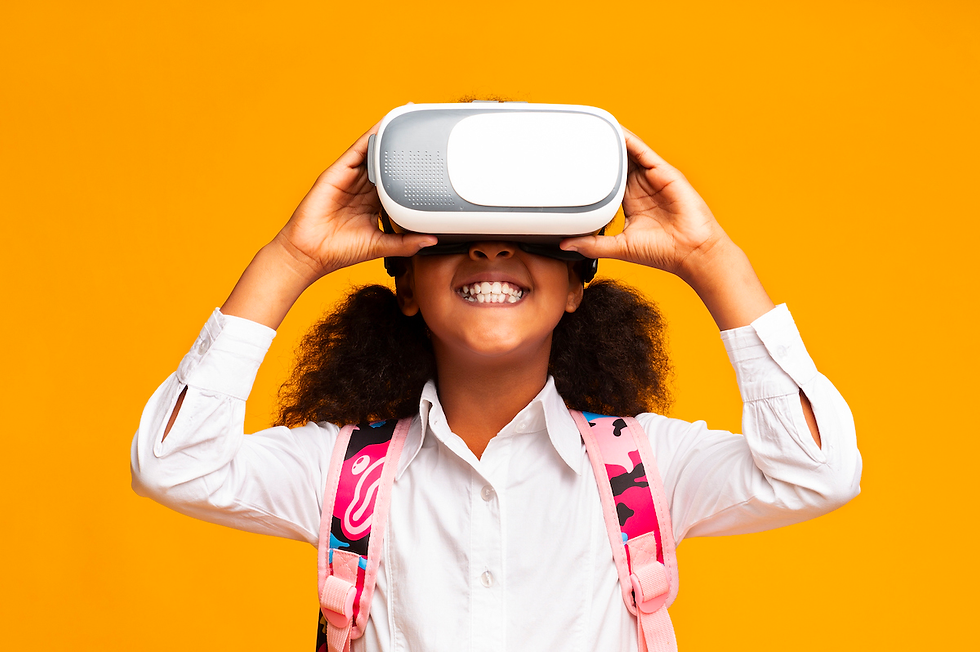Building successful Communities of Practice in the workplace
- Thao Vu
- Sep 28, 2023
- 4 min read
Updated: Sep 30, 2023
“How are you handling changes lately?”. Our meeting started, always, with a question like this. Originally, these questions were intended as simple check-in, a temperature check. Gradually, these questions evolved into deeper personal reflections, to share our thoughts on new topics and opportunities for us to learn from each other. Like today, I got reminded once again about change management, especially unpleasant changes: let go of things you cannot control, stay open-minded when dealing with discomfort arising from the changes, and perhaps, as Kai said, try to find something humourous about it and laugh the discomfort away.

At Graduate Student Life - Teachers College, where I am working part-time as a Graduate Fellow for Academic Success and engagement, I have seen perfect examples of how a community of practice (COP) is cultivated and nurtured in the workplace. As a learning specialist, I have pondered upon how continuous learning and the COP can grow so organically and seemingly effortlessly at a place like GSLD. Here are 3 tips I observed from our COP that make a difference:
1. Give people the freedom to be:
In his article about COP, Wenger (2006) mentioned the various forms and diverse nature of COPs. "While they all have the three elements of a domain, a community, and a practice, they come in a variety of forms. Some are quite small; some are very large, often with a core group and many peripheral members. Some are local and some cover the globe. Some meet mainly face-to-face, and some mostly online. Some are within an organization and some include members from various organizations. Some are formally recognized, often supported with a budget; and some are completely informal and even invisible".
I would like to further add that not only the form but the dynamics of each COP is different. A community of practice is a collective of different individuals. And with different individuals, with different topics, the chemistry can vary. It is important to check in and see what the group dynamic is like and what people's preferences are.
I found it very fascinating when during a discussion over community guidelines, my colleagues mentioned regulations like “Make space for silence too". Silence can mean someone is thinking, observing, and processing information. It is by no means not wanting to contribute.
The key to a sustainable community is to give people the freedom to be. At GSLD, we were emboldened to be: be silly, curious, and motivated to seek out opportunities to learn and grow.

2. Schedule learning time: It takes "time and sustained interactions" (Wenger, 2006). Much as learning professionals rave about building on-the-job learning, creating micro-learning, or using AI to create just-in-time learning, we cannot deny the fact that learning takes time. In the workplace where there are so many competing priorities - meetings, our own tasks- it is critical that we build out time for learning if we want to grow.

At GSLD, we had time slots built out specifically for learning. In the summer when work was a bit hectic, we had a 30-minute presentation where we could talk about whatever we cared about. In the school year, when students come back and things become a bit more hectic, we were committed to setting aside 30 minutes every 2 weeks for our learning session.
3. Diversify learning topics & activities: On the second day of my job, my jaw dropped as I saw the presentation on what happens if Kim Kardashian pursues education at TC. In my mind, workplace learning topics would include buzzwords like “leadership development" or “effective team building". What does Kim have to do with our job as higher-education professionals?

Interestingly enough, I realized that we as adult learners will naturally draw connections from topics that are seemingly unrelated to what we are doing. In the presentation about Kim Kardashian, as we dissected the characteristics of her student identity, we realized that Kim Kardashian is not much different from our non-traditional students: student-parents who are juggling academic work and a career, returning to school after years of being in the professional world. The unique case of Kim became the starting point for conversations about how Student Affairs can better support our non-traditional student demographics. The dots connect here.
Not only did topics vary in our COP meetings. The activities and interactions taking place in our COP vary too from discussing theories and concepts, to case-based learning, to formal training with a trainer. Wenger (2006) also mentioned that "Communities develop their practice through a variety of activities."

Source: Wenger, E. (2011). Communities of practice: A brief introduction.
So next time you plan to learn topics, play around with ideas, try exploring novel connections and new activities (maybe check out what the Kardashians are doing!)
The experience with the COP at my workplace allows me to see an expanded view of Knowles (1972)'s theories: while we are adult learners who are problem-centric, self-directed, and autonomous, we are also humans who want to have fun, who need dedicated time/ space/ support with learning and who desire to bring our authentic self to learning. By supporting people to be themselves, creating space for learning to take place, and injecting fun into learning, we are also enabling the workplace COP to thrive.
Reference:
Knowles, M. S. (1972). Innovations in teaching styles and approaches based upon adult learning. Journal of education for social work, 8(2), 32-39.
Wenger, E. (2011). Communities of practice: A brief introduction.




Comments